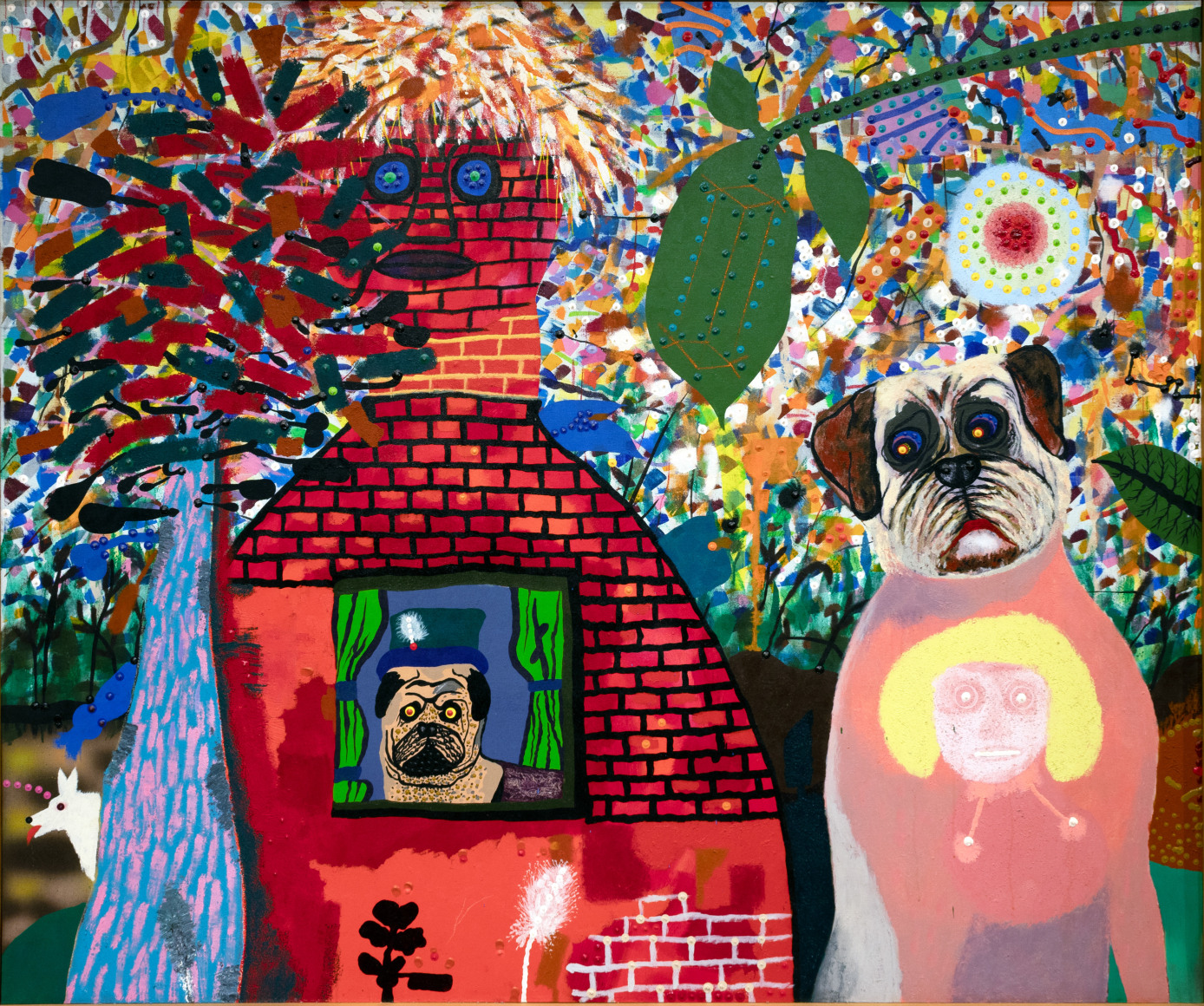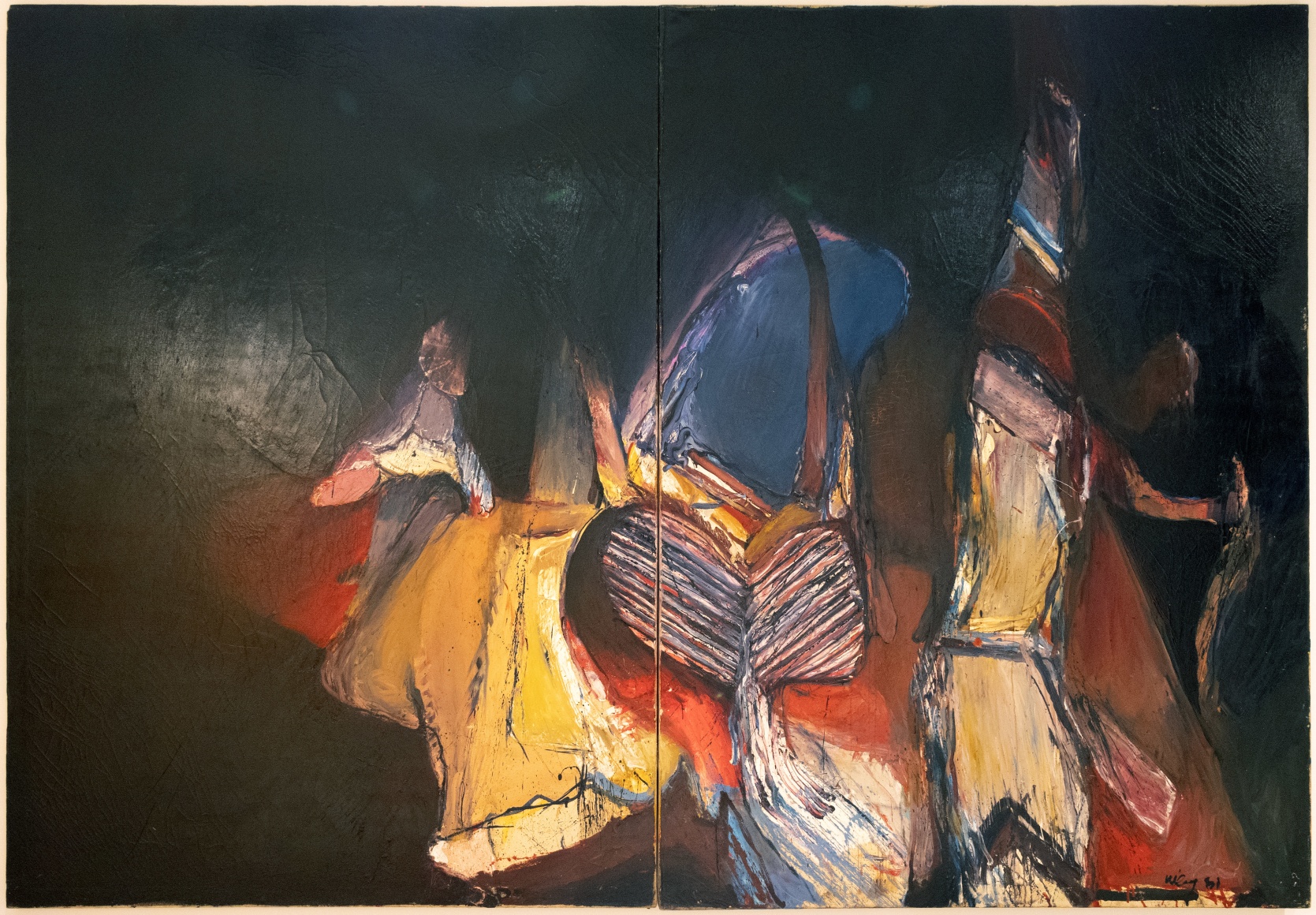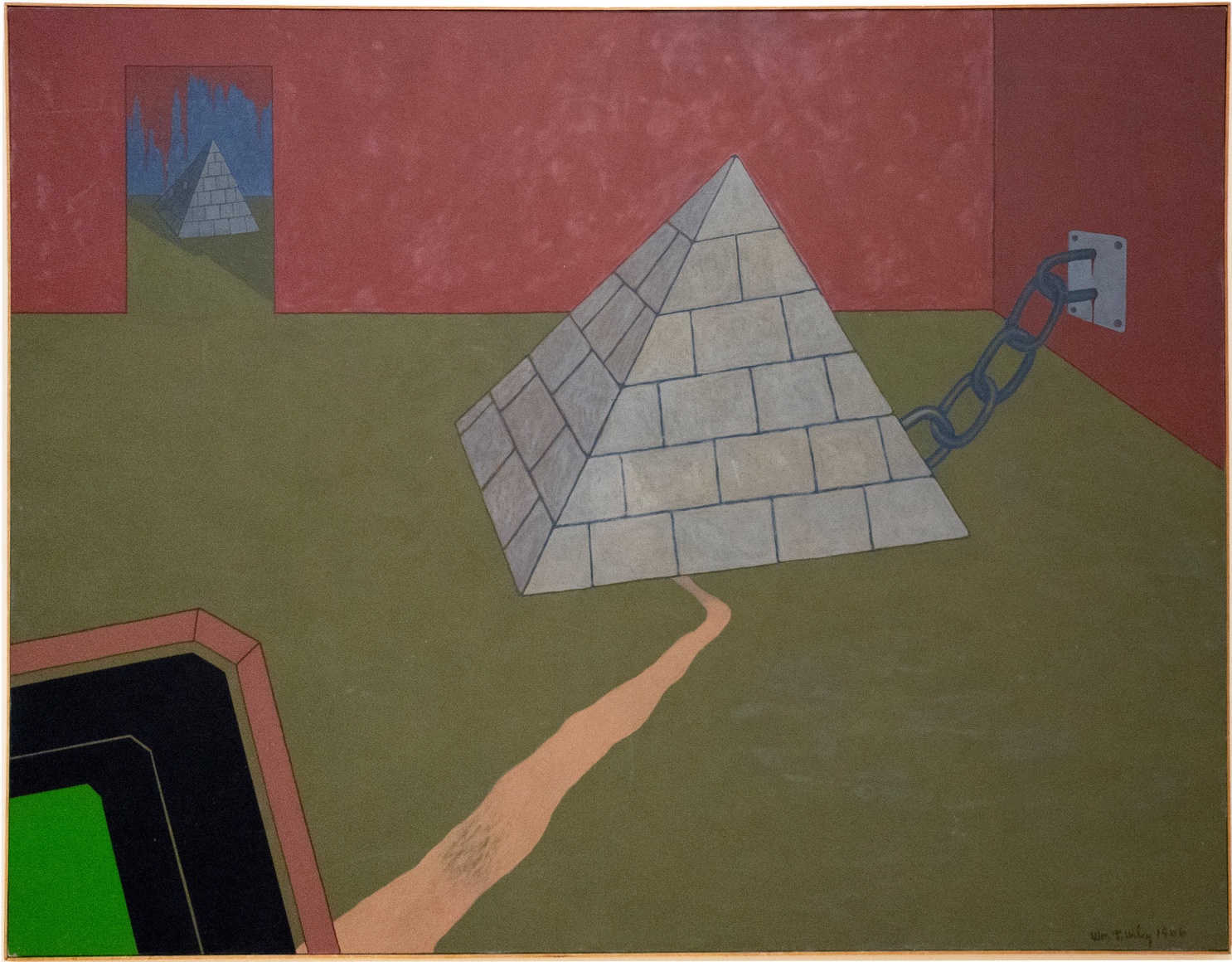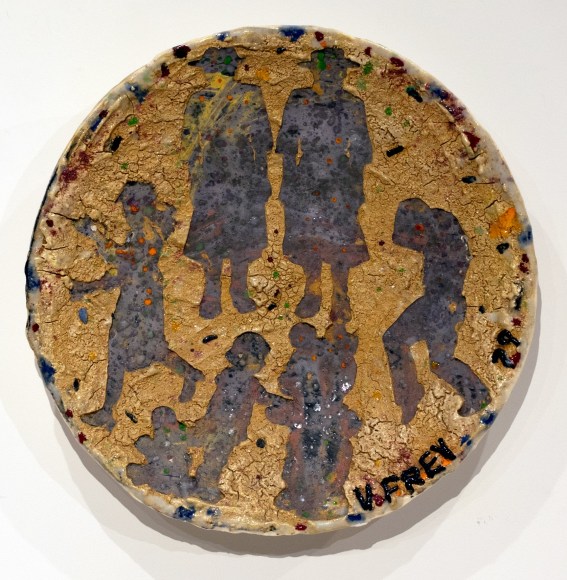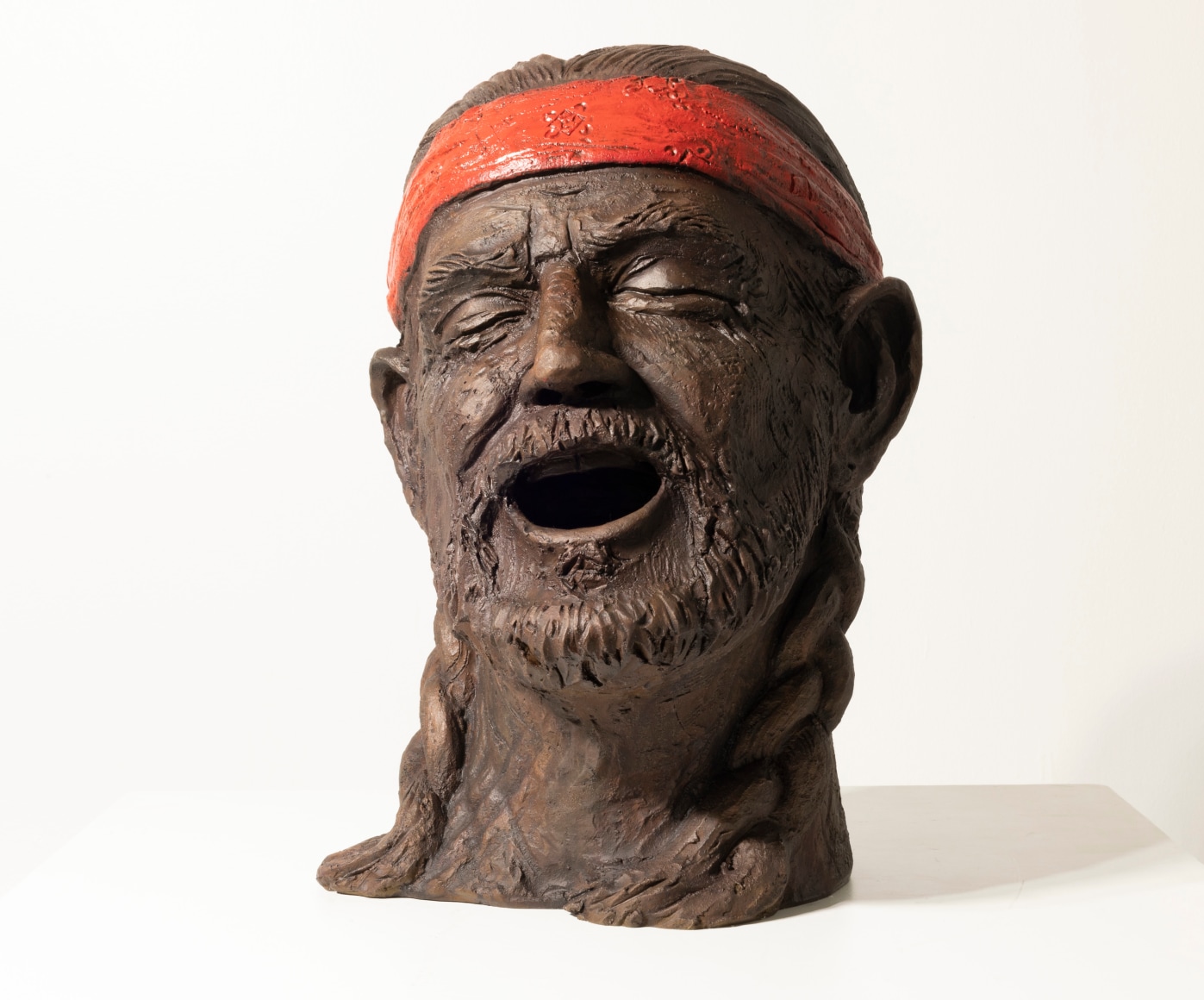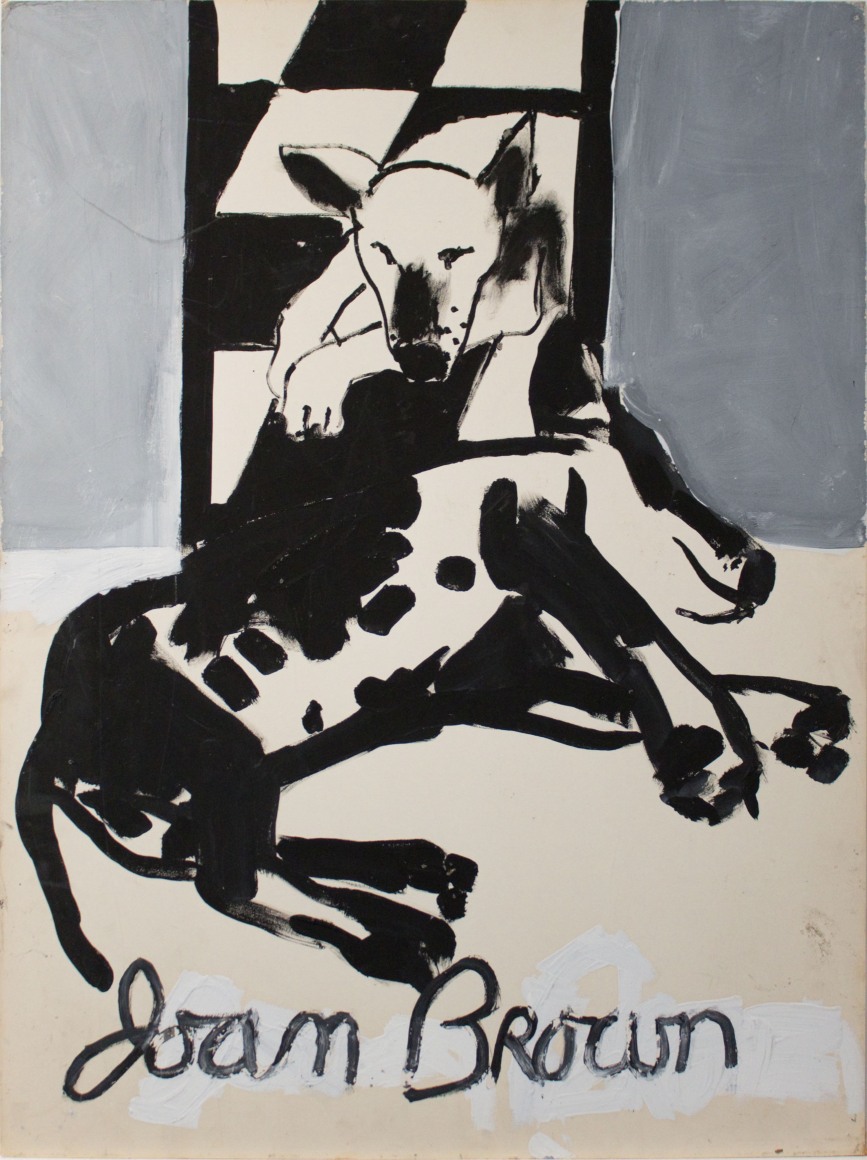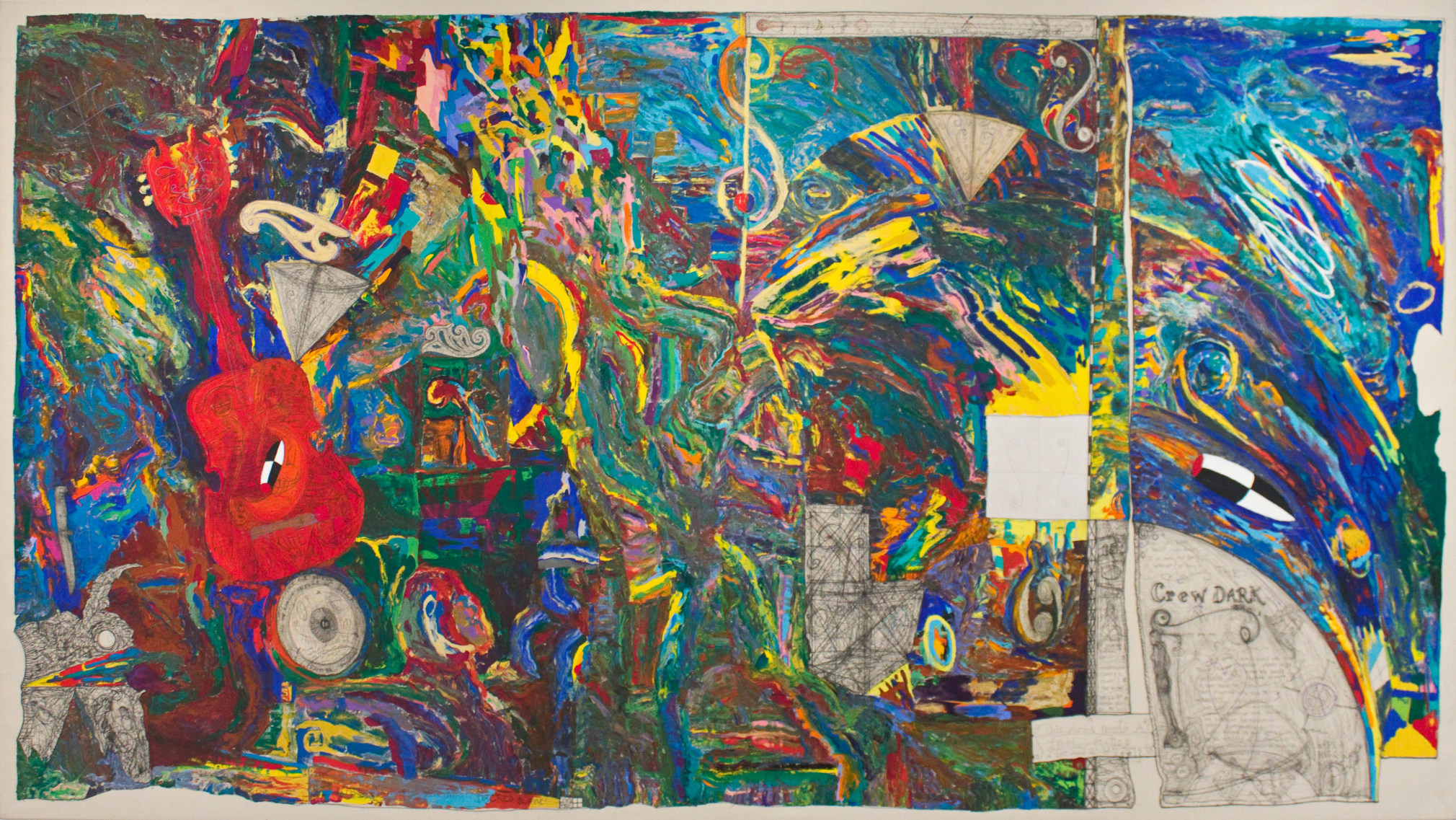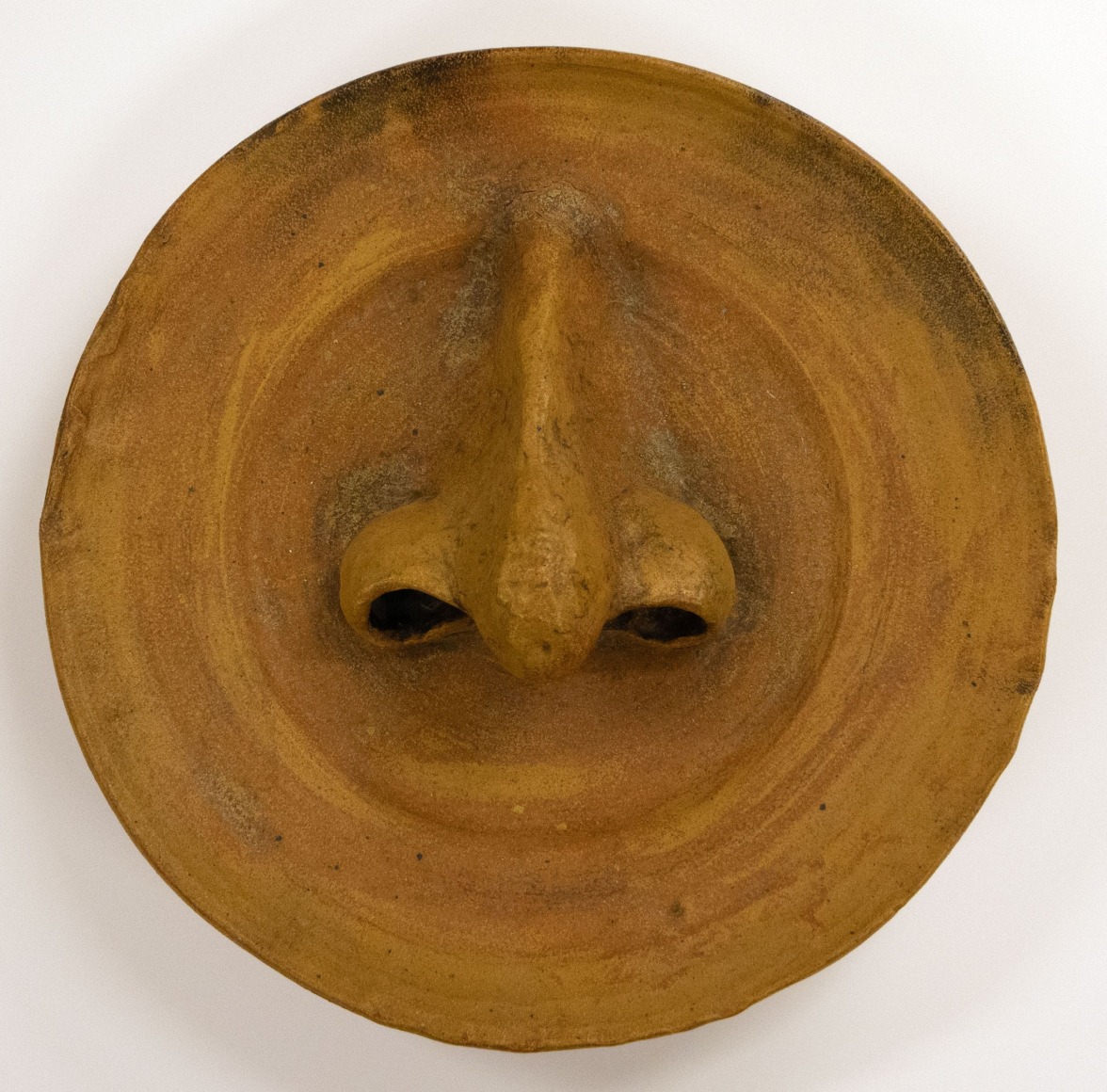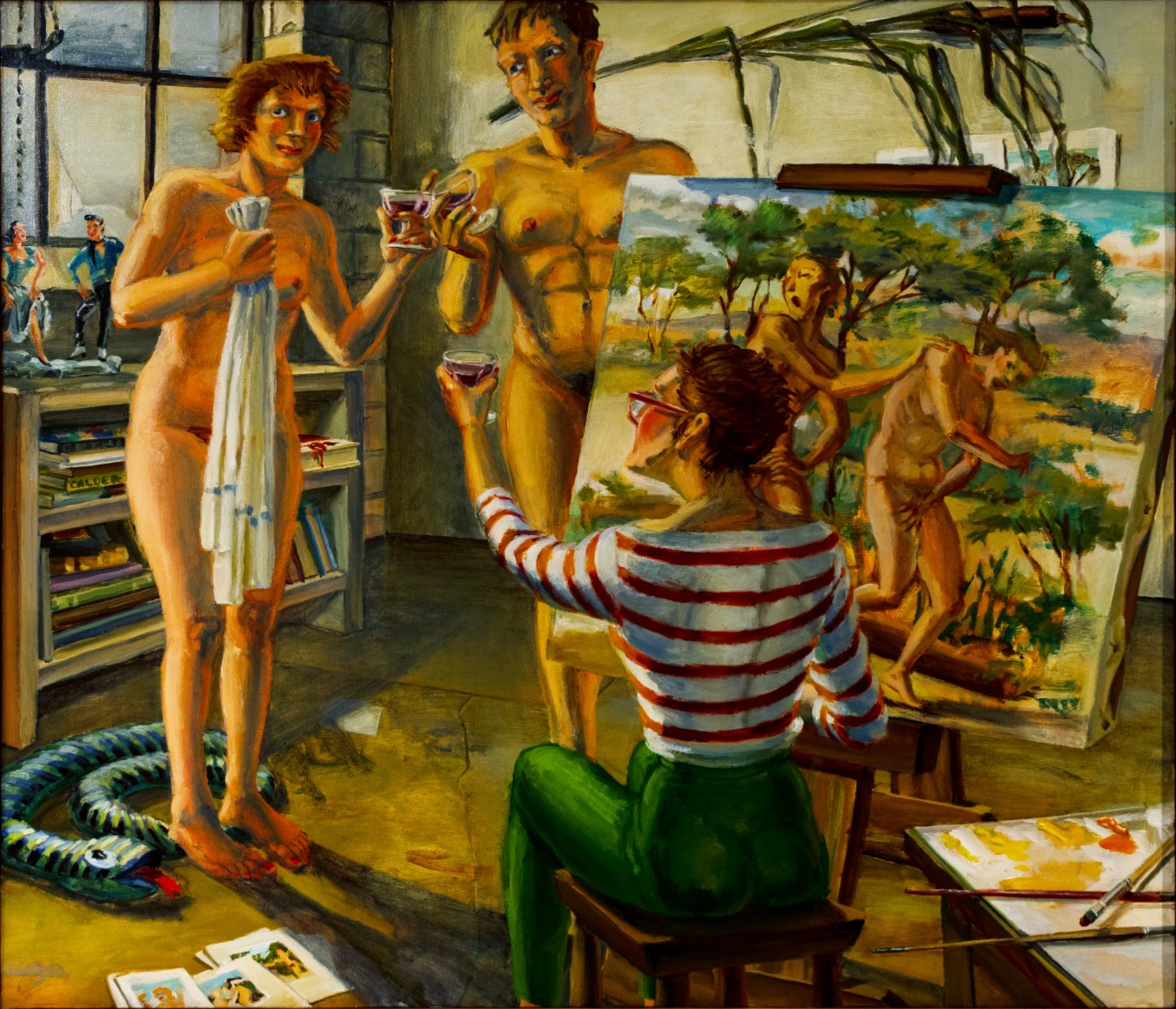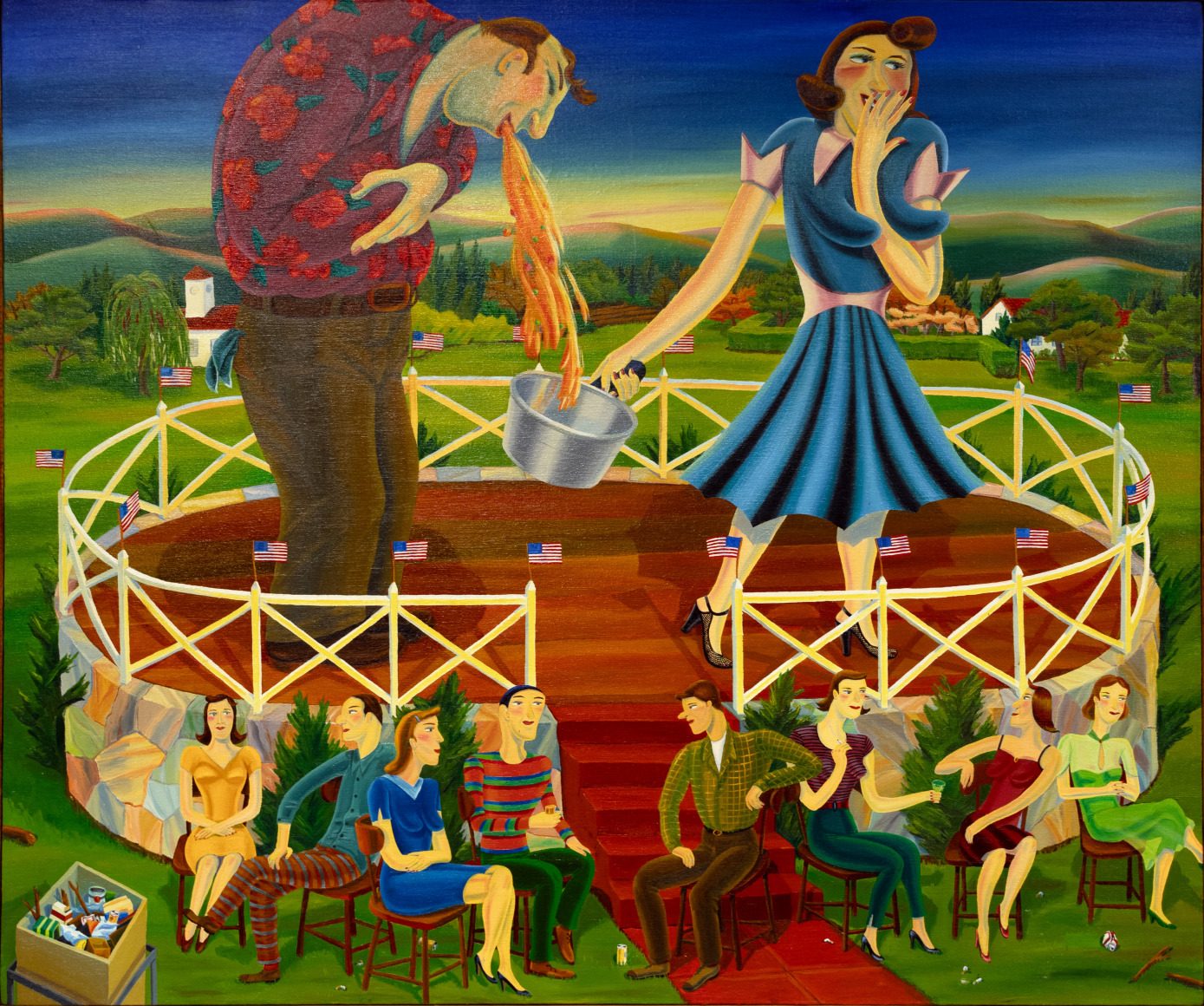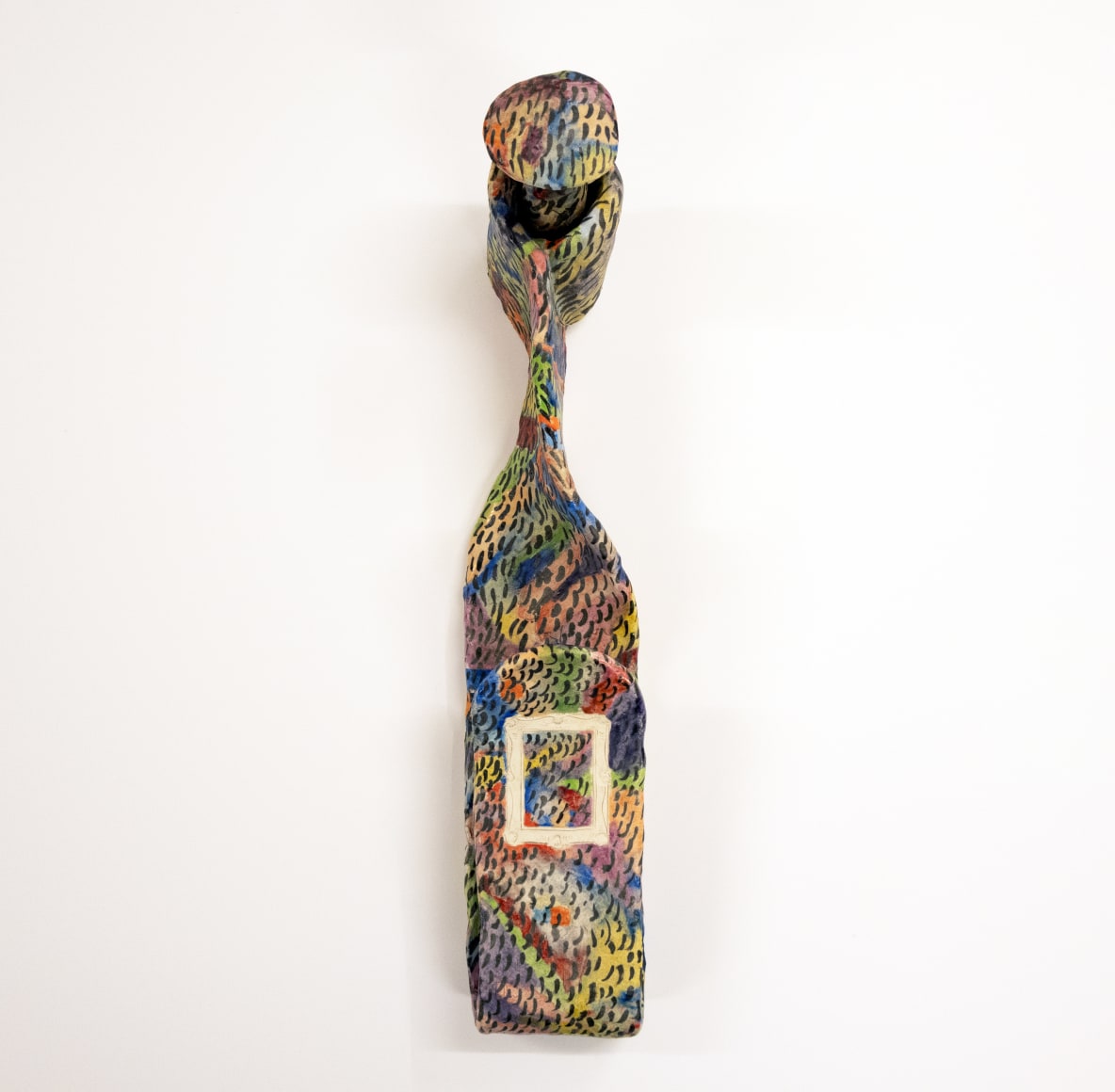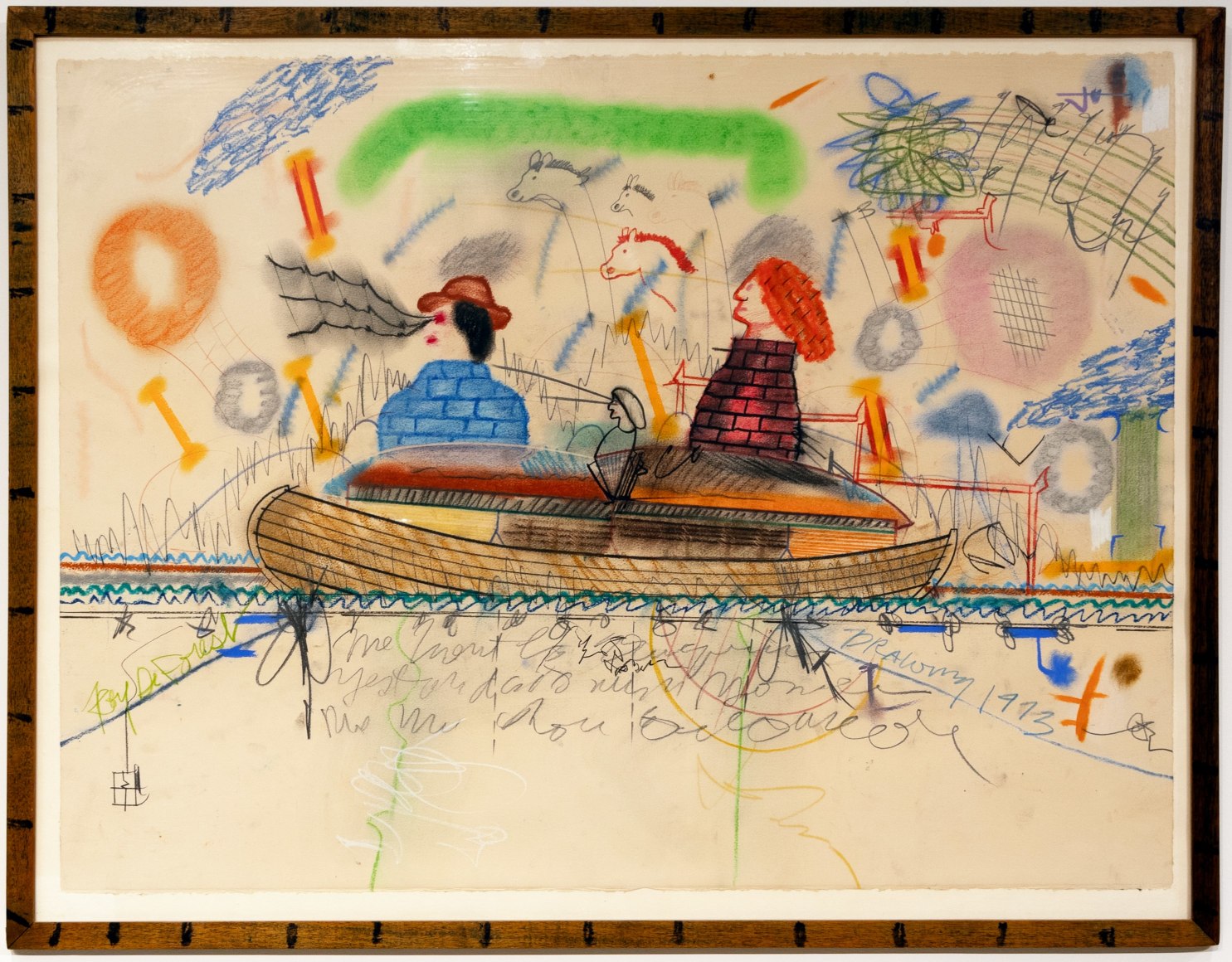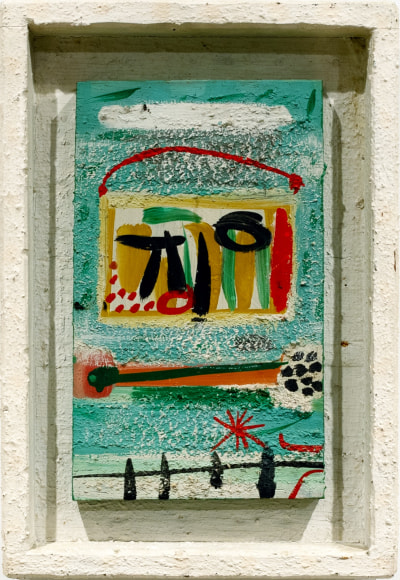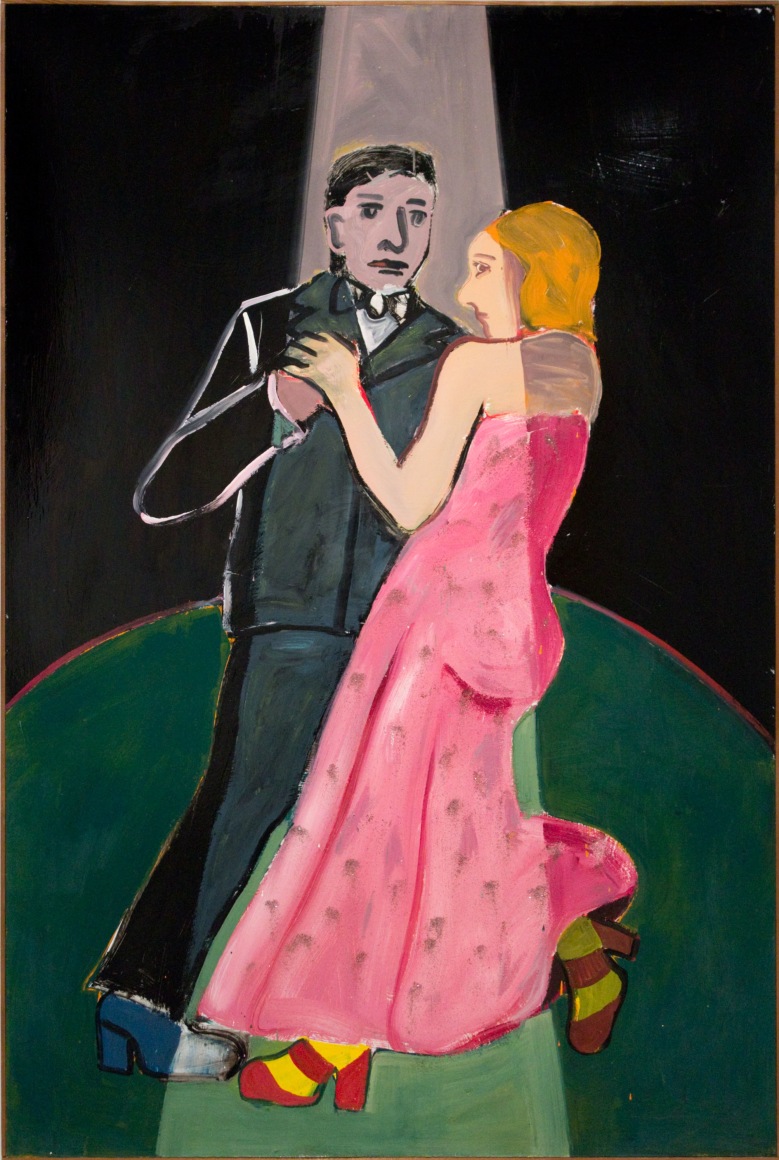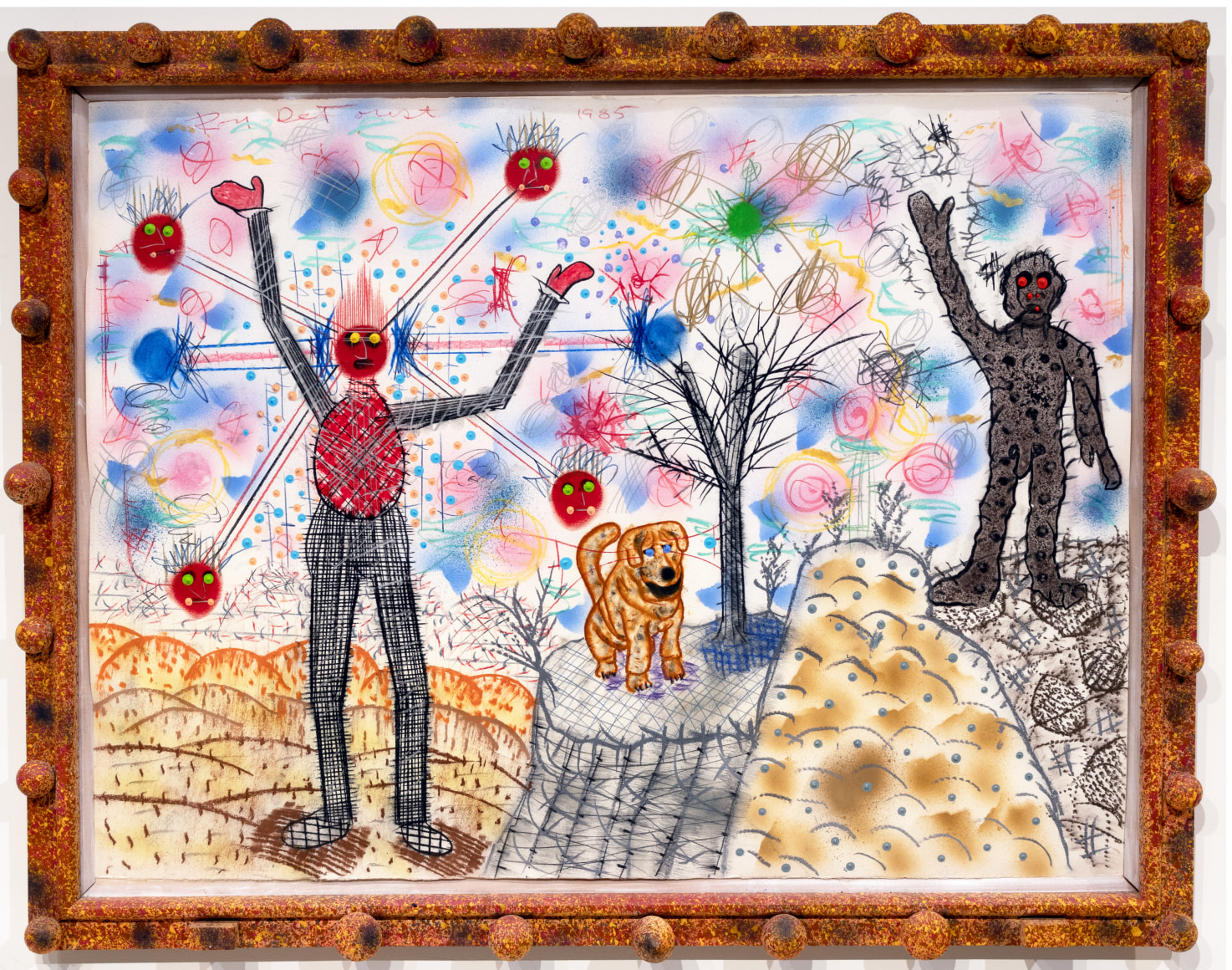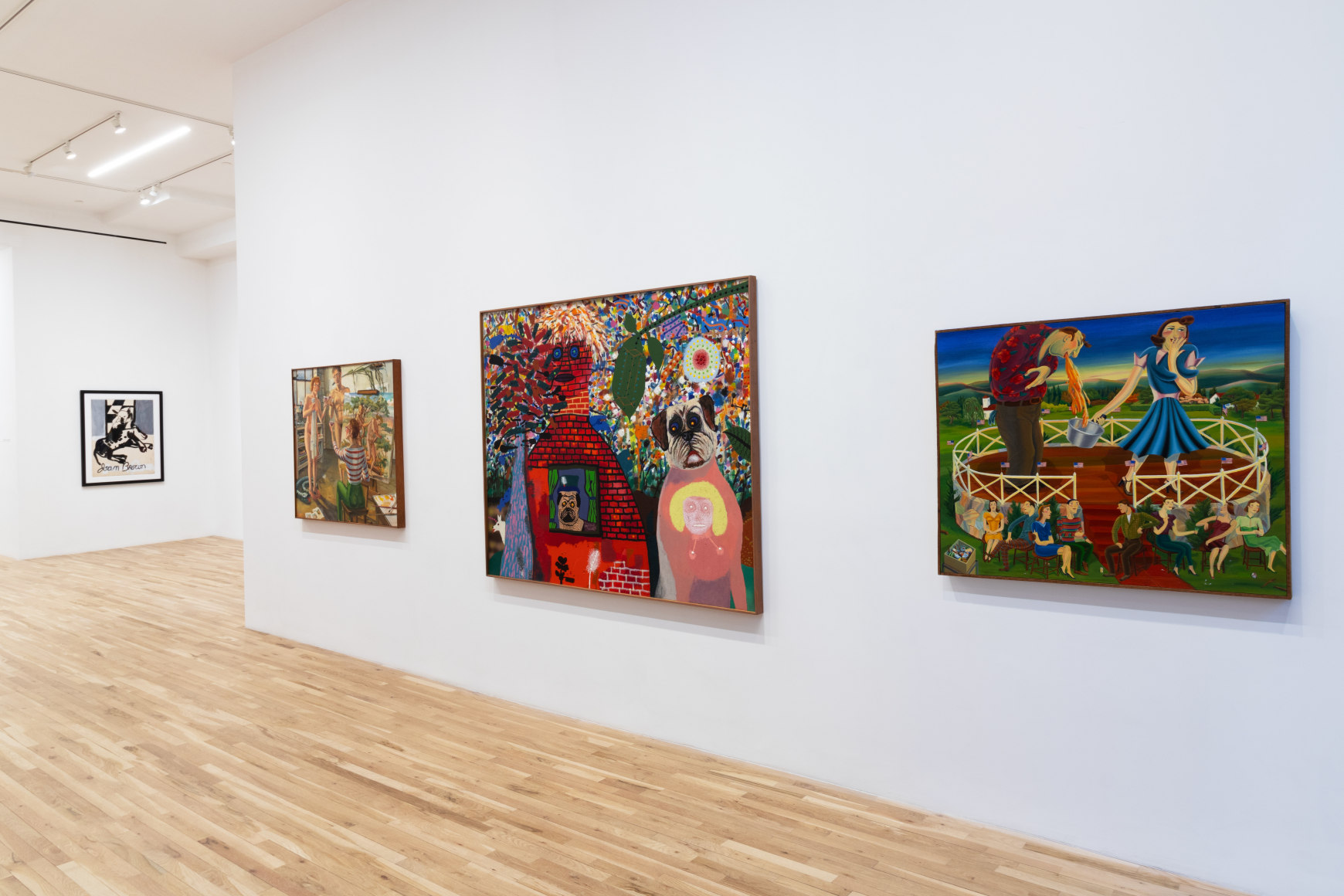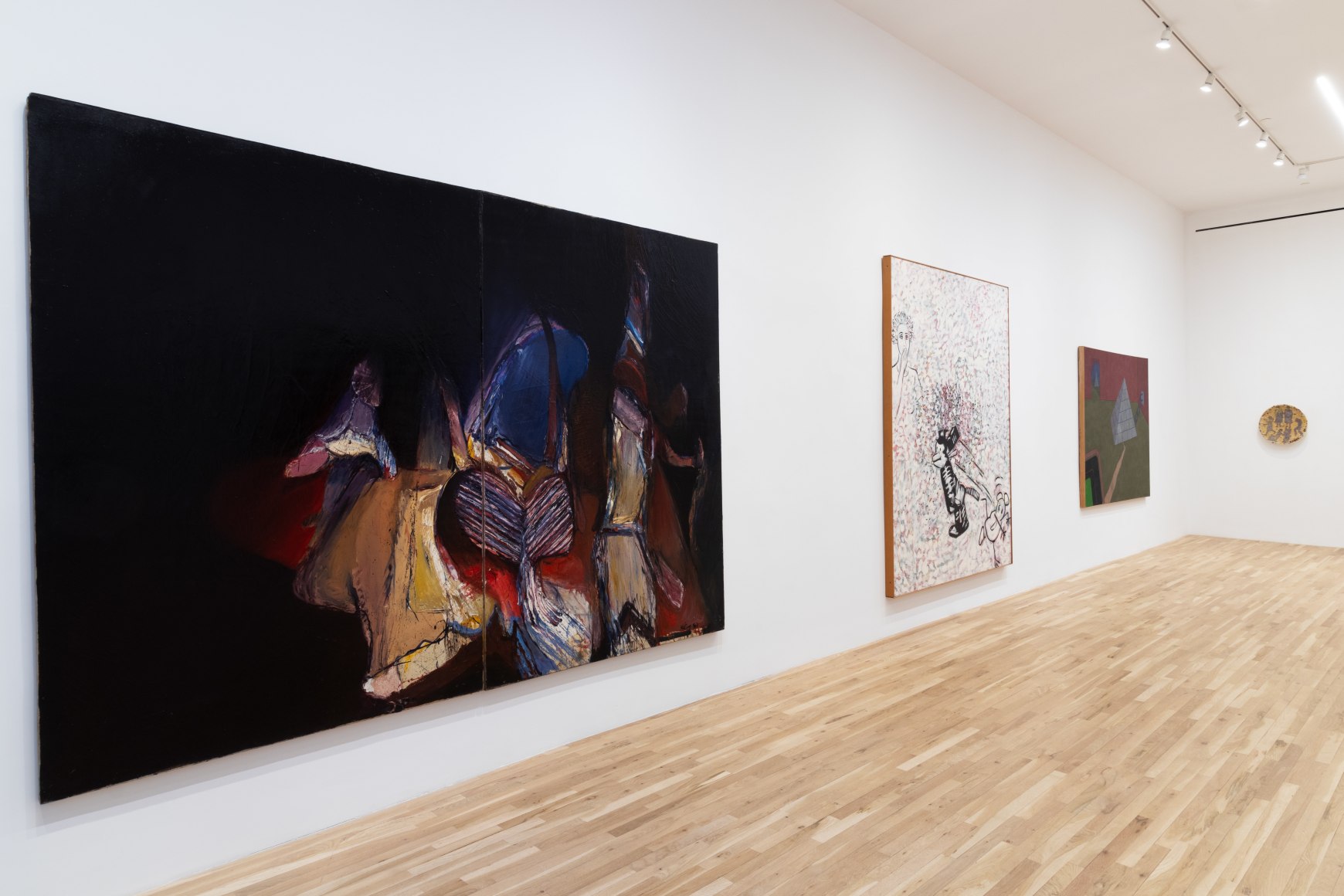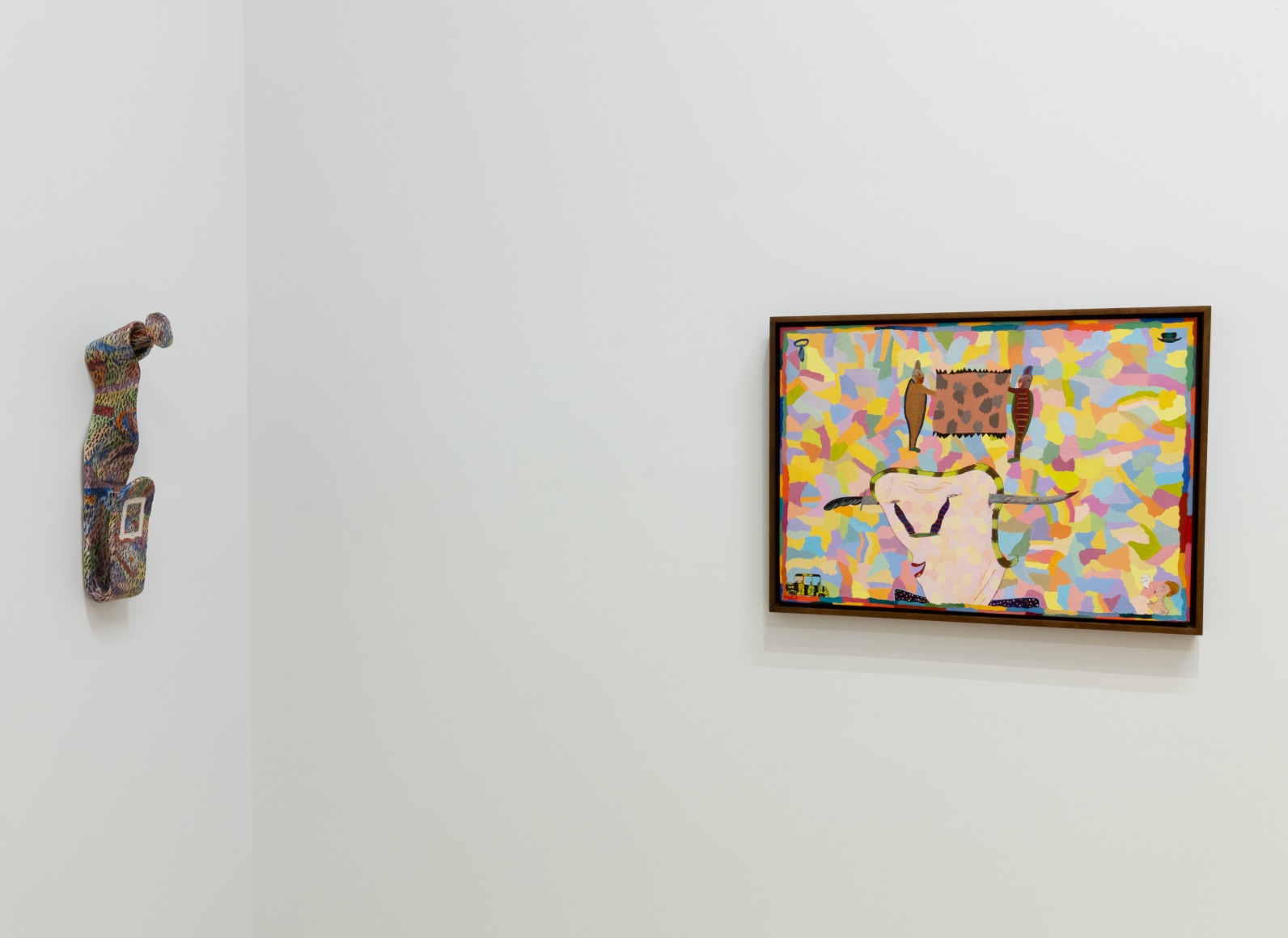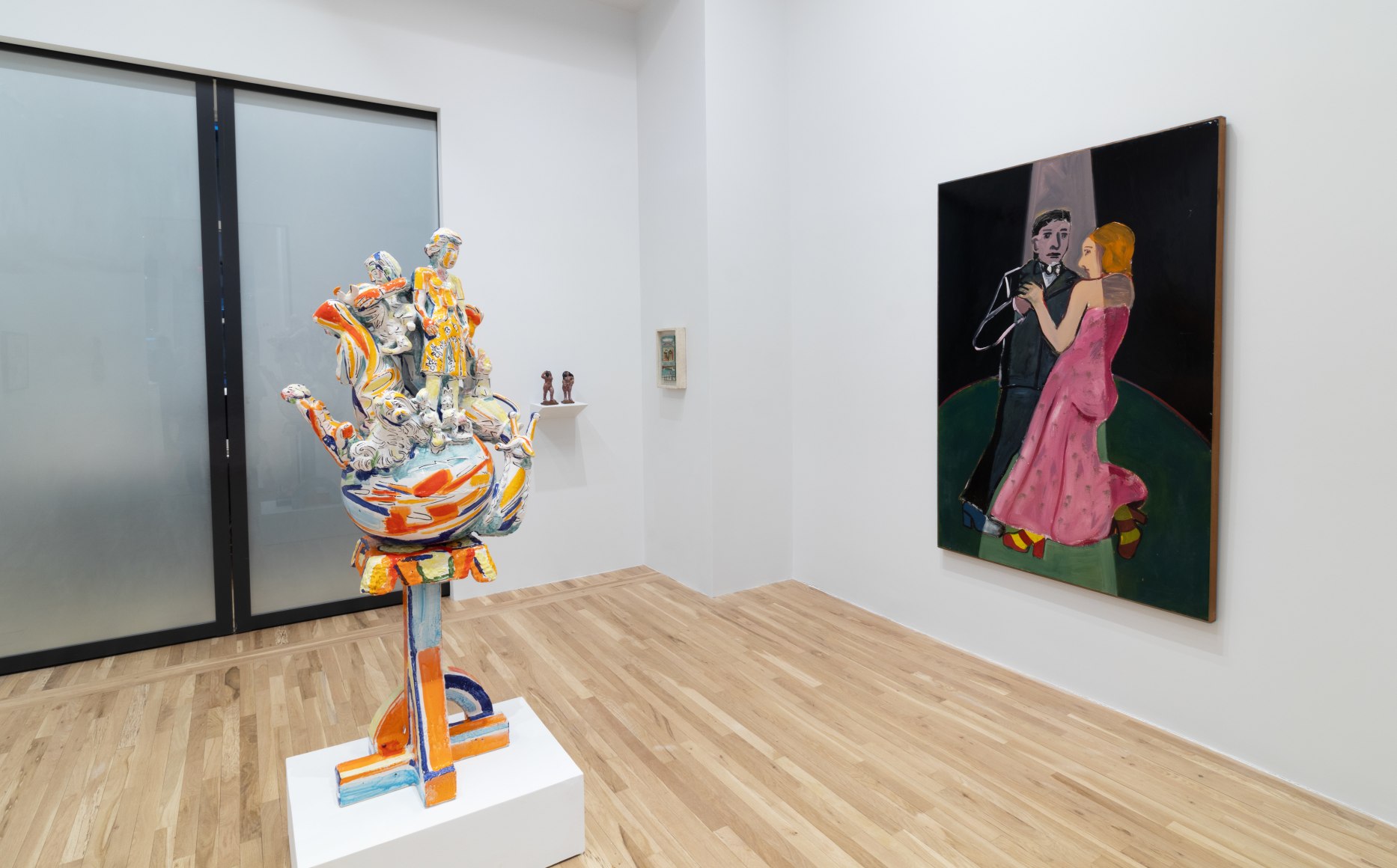The George Adams Gallery is pleased to present Going Our Way, a group exhibition of paintings, drawings, and sculptures by Robert Arneson, Joan Brown, Roy De Forest, Viola Frey, M. Louise Stanley, and William T. Wiley. Known for its enduring commitment to art from the San Francisco Bay Area, the exhibition maintains the gallery’s tradition of championing the region’s artistic heritage. The artists included are connected through the unique influence of the Bay Area on their work, and the title reflects each artist's response to prevailing trends over a span of three decades. While they worked in different styles and across media, the six artists are united in their rejection of the impersonal, “objective” attitude that informed the dominant West Coast trends of Formalism, Photorealism and New Abstraction. Instead, each in their own way celebrates an intimate, subjective, and idiosyncratic autobiographical expression – an approach that the exhibition traces from their earliest work in the 1960s and continues through the 1970s and 1980s.
The artists included in the exhibition all lived and worked in the San Francisco Bay Area. Arneson, Brown and Frey were born in California, while De Forest, Stanley and Wiley all moved to the Bay Area to study art. Brown, De Forest and Wiley attended the San Francisco Art Institute (then the California School of Fine Arts) while Arneson, Frey and Stanley studied at the California College of Arts and Crafts. From the early 1960s through the 1980s Arneson, De Forest and Wiley were on the faculty at the University of California, Davis. Brown taught at UC Berkeley, where she eventually chaired the Art Department. Frey and Stanley both taught at the California College of Arts and Crafts. Not to be overlooked, Arneson, Brown, De Forest and Wiley were represented by the same galleries on both coasts.
The educational and professional connections between the exhibited artists highlight the collaborative and supportive environment that flourished in the Bay Area during this period. Their shared experiences at institutions (such as the San Francisco Art Institute and the California College of Arts and Crafts), as well as their subsequent roles as educators, highlight the symbiotic relationship between their artistic development and the nurturing community they helped cultivate.
Robert Arneson (b. 1930, Benicia, California, d. 1992, Benicia, California), is known as one of the pre-eminent American sculptors of his generation. Arneson earned his BFA from the California College of Arts and Crafts and his MFA in ceramics from Mills College. He founded the ceramics program at the University of California, Davis where he would remain on faculty for nearly thirty years. In the early 1960s, Arneson developed an irreverent and humorous approach to sculpture, later dubbed as “Funk.” He used self-portraiture as a method to examine the human condition: a theme present throughout his work until the end of his life. Arneson exhibited widely during his career and is recognized as a key figure in the re-consideration of ceramics as a sculptural medium. His work can be found in the collections of the San Francisco Museum of Modern Art; Metropolitan Museum of Art, New York; Hirshhorn Museum and Sculpture Garden, Washington D.C.; and Museum of Contemporary Art, Chicago, Illinois, among others. He has been the subject of several traveling retrospectives, in 1974, organized by the Museum of Contemporary Art, Chicago; in 1986-87, organized by the Des Moines Art Center, Iowa, and posthumously in 1993, at the Fine Arts Museum of San Francisco, California.
Joan Brown (b. 1938, San Francisco, California, d. 1990, Puttaparthi, India) is considered a leading figure in the second generation of the Bay Area Figurative movement. Early on in her career, she received praise for dense Abstract Expressionist paintings, however she ultimately pivoted from the style in favor of autobiographical, figurative paintings. Her portraits and self-portraits were painted in a purposefully flat and colorful style. Brown earned both her BFA and MFA at the California College of Arts and Crafts and was a professor emeritus at UC Berkeley. Brown’s work is represented in many institutional collections across the country, including the Museum of Modern Art, New York; the Hirshhorn Museum and Sculpture Garden, Washington D.C.; and the Crystal Bridges Museum of American Art, Arkansas. Her work is currently on tour in her most comprehensive retrospective to date. It opened at the San Francisco Museum of Modern Art, California in 2022 before traveling to the Carnegie Museum of Art, Philadelphia. Its last stop will be at the Orange County Museum of Art, California, where it will be on view from February 1 - May 7, 2024.
Roy De Forest (b. 1930, North Platte, Nebraska, d. 2007, Vallejo, California) was a painter, sculptor, and educator, and is considered a major contributor to both the Funk art and Nut art movements. De Forest earned his BA from the California School of Fine Arts and his MFA from San Francisco State University. De Forest was a professor at UC Davis for nearly three decades. He is known for his paintings depicting richly colored and textured fantasy worlds containing flat, stylized landscapes in juxtaposition with cartoon-like animals and human figures. He exhibited widely during his lifetime, and was the subject of two major retrospectives, one in 1974, and posthumously in 2017, organized by the Oakland Museum, California. His work can be found in major public collections internationally, including the San Francisco Museum of Modern Art, California; the Whitney Museum of American Art, New York; and the Art Institute of Chicago, Illinois, among others.
Viola Frey (b. 1933, Lodi, California, d. 2004, Oakland, California) was an artist known for her monumental ceramic sculptures, smaller figural groupings, and plates, though her practice also encompassed painting, drawing, and photography. She received her BFA from the California College of Arts and Crafts and her MFA from Tulane University. Frey returned to the California College of Arts and Crafts as a professor in 1965, ultimately becoming chair of the ceramics program. Frey’s artistic style is characterized by an emphasis on the human figure, a robust visual vocabulary, and energetic color and line. Her work has been exhibited extensively and is included in the Metropolitan Museum of Art, New York; the Smithsonian American Art Museum, Washington, D.C.; and the Los Angeles County Museum of Art, California, among others.
M. Louise Stanley (b. 1942, Charleston, West Virginia) is known for work that explores narratives of both current and fictitious events and often incorporates social commentary and satire. She moved to the San Francisco Bay Area in 1965, where she received her BFA and MFA in painting from the California College of Arts and Crafts. She often employs “real” space juxtaposed with caricature to create an edgy effect. Similarly, she utilizes humor to connect with darker themes. Stanley’s involvement in the Women’s Artist movement inspired paintings relating to gender issues and sexual politics in the art world. She developed an alter ego who frequently appears in her paintings as an “Archetypal Artist”. Most recently, her work reflects research she conducted during her travels in Europe, where she led and organized the “Art Lover’s Tours” for 14 years. Her work has been exhibited widely throughout California, such as the Marin Museum of Contemporary Art; Richmond Art Center; and California College of Arts, among others. Stanley currently lives and works in Emeryville, California.
William T. Wiley (b. 1937, Bedford, Indiana, d. 2021, Kentfield, California) was a multidisciplinary artist and educator known for his experimental approach and open personality. He was a key contributor to the Funk movement, and his interest in Americana led to his work being coined “Dude Ranch Dada.” While he initially focused on sculptures and assemblages, he is best known for dense landscapes and interior scenes overlaid with humorous text. Wiley exhibited widely throughout his career and his work can be found in the collections of the Museum of Modern Art, New York; San Francisco Museum of Modern Art, California; and the Art Institute of Chicago, Illinois, among others.

